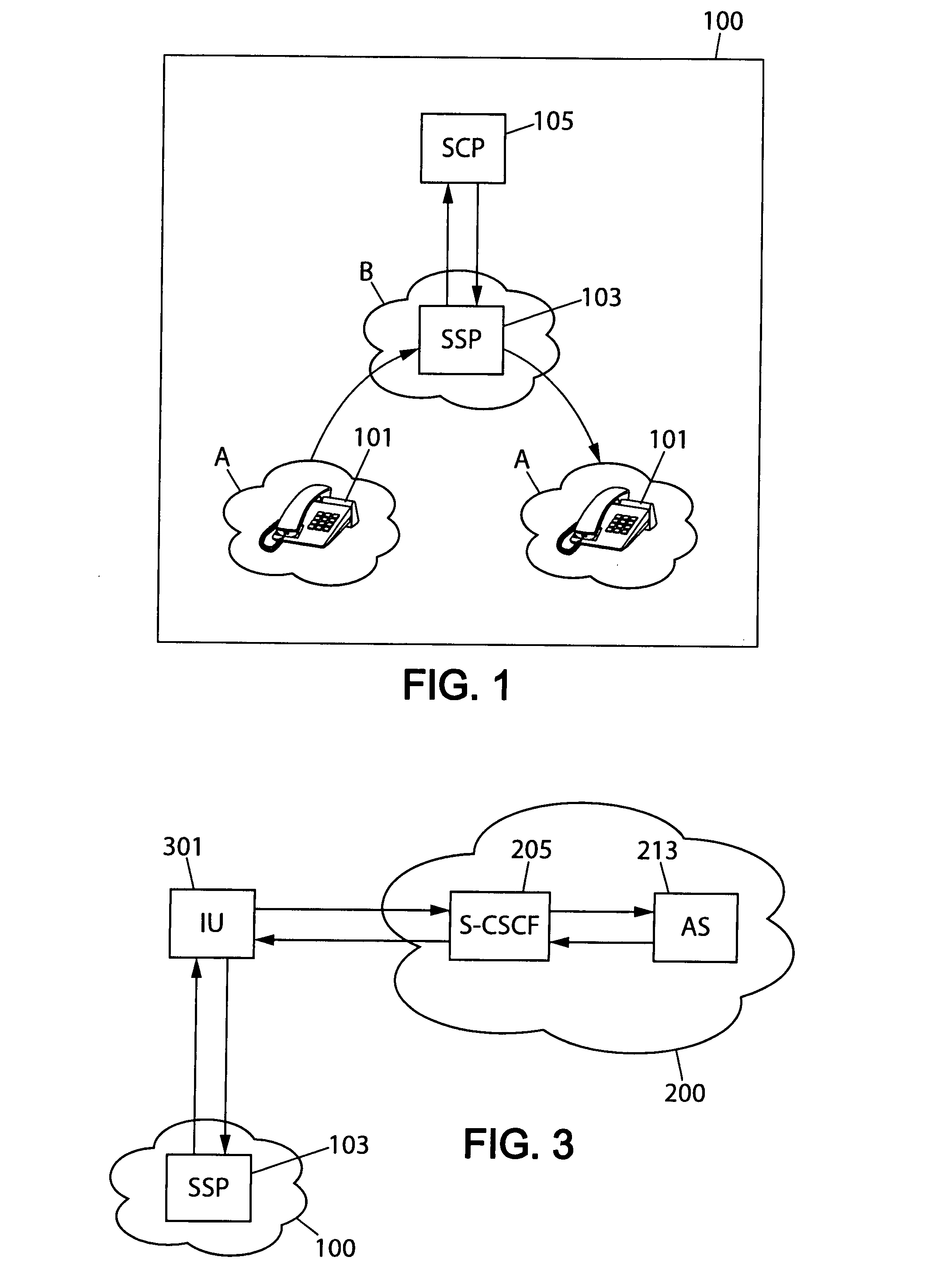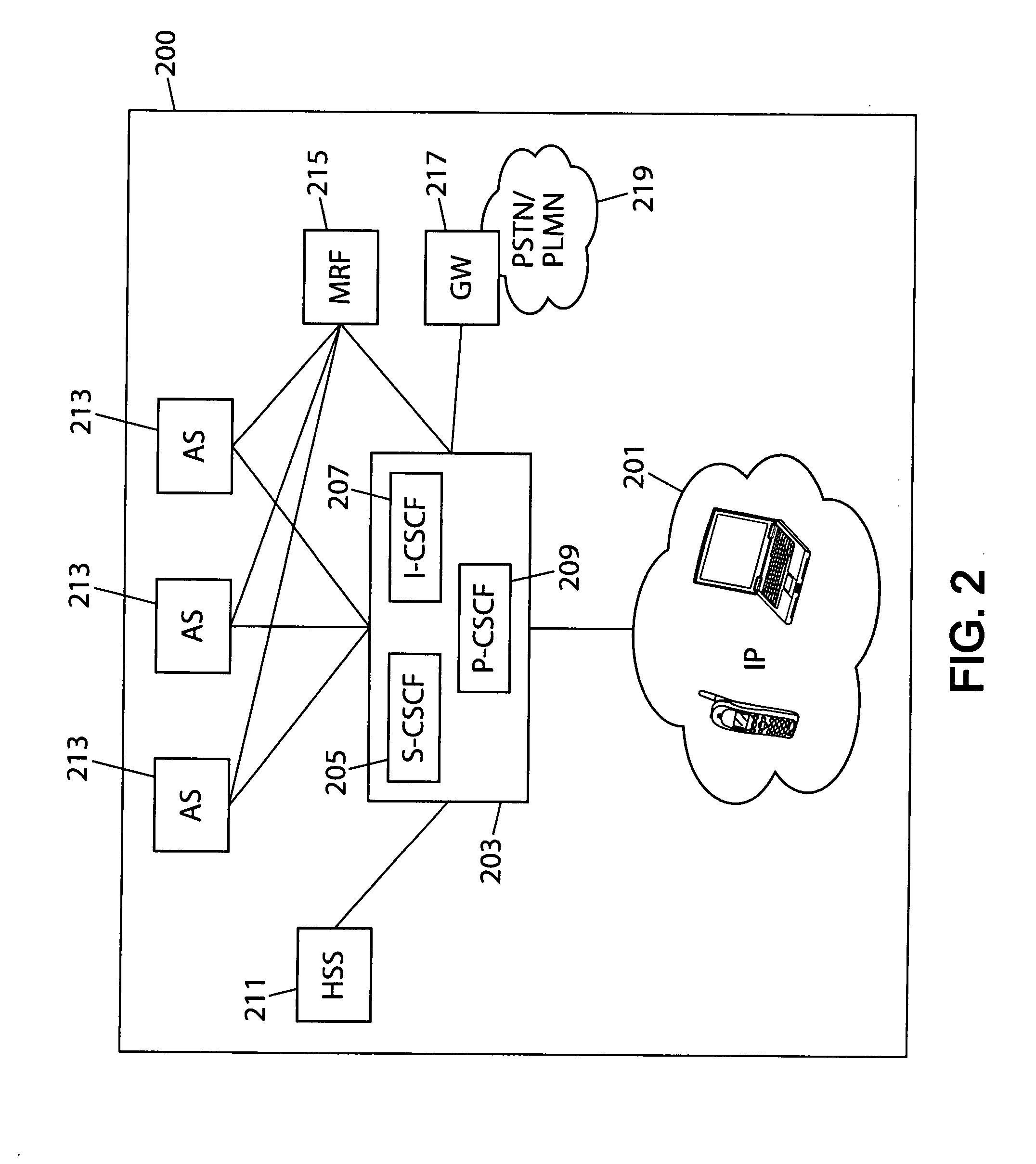Network interoperability
- Summary
- Abstract
- Description
- Claims
- Application Information
AI Technical Summary
Benefits of technology
Problems solved by technology
Method used
Image
Examples
Embodiment Construction
[0035] Next some embodiments of the invention will be described in more detail with reference to FIGS. 3 and 4. In the following description the originating side is the side and corresponding network elements from where the call originates as opposed to terminating side which is the side and corresponding network elements where the call terminates. Furthermore, in the following description, the TDM IN 100 operates in accordance with global system for mobile communications customized applications for mobile network enhanced logic (GSM CAMEL) standard, but the IN 100 could equally use any other TDM communication standard.
[0036]FIG. 3 represents how the IN 100 shown in FIG. 1 and the IMS network of FIG. 2 can be connected to each other via an interface unit (IU) 301. The session initialization protocol (SIP) used by IMS ASs 213 has been extended by the ETSI 3GPP in order to introduce facilities not present in the original Internet Engineering Task Force (IETF) SIP protocol, in particu...
PUM
 Login to View More
Login to View More Abstract
Description
Claims
Application Information
 Login to View More
Login to View More - R&D
- Intellectual Property
- Life Sciences
- Materials
- Tech Scout
- Unparalleled Data Quality
- Higher Quality Content
- 60% Fewer Hallucinations
Browse by: Latest US Patents, China's latest patents, Technical Efficacy Thesaurus, Application Domain, Technology Topic, Popular Technical Reports.
© 2025 PatSnap. All rights reserved.Legal|Privacy policy|Modern Slavery Act Transparency Statement|Sitemap|About US| Contact US: help@patsnap.com



